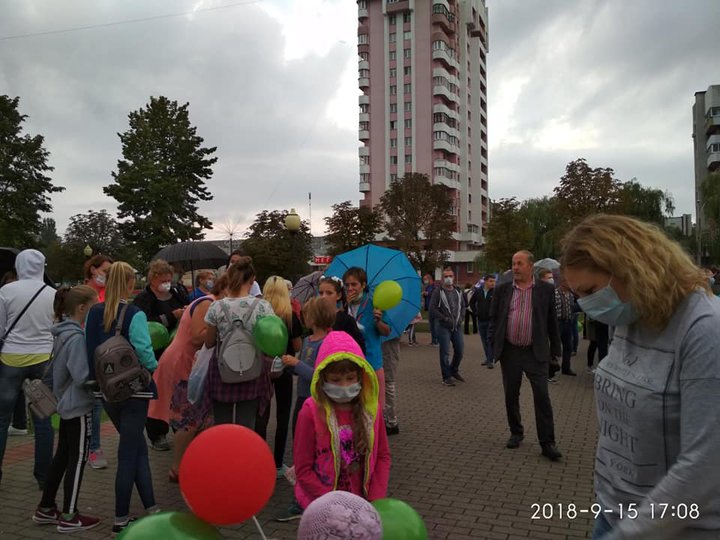Political parties start preparations for the elections; civil society retained protests in Svetlogorsk, Kurapaty, and Brest
 The situation has gotten better
The situation has gotten better

Opposition organizations are starting to shape their strategies for the participation in the next presidential elections. Tell The Truth plans to nominate a presidential candidate independently, while centre-rightists aspire for a broad coalition. Despite enhanced repressions by law enforcers, civil society and political parties further organised protests in Kurapaty and against the battery plant construction in Brest and in Svetlogorsk.
Tell The Truth announced plans to nominate a candidate for the presidency in the upcoming presidential elections independently, yet not disclosing the name of the probable nominee. Tell The Truth leaders, ex-candidate presidential candidate in 2015 Tatsiana Korotkevich and head of Neklyayev’s campaign in 2010 Andrei Dmitriev are the most recognised personas. However, in the past, the opposition had never nominated the same person as a candidate more than once.
Meanwhile, centre-rightists favour the creation of a broad coalition for nominating a single presidential candidate. Along with the United Civic Party, the Belarusian Christian Democrats and For Freedom Movement, this opposition alliance could include the parties, with which centre-rightists gained confidence within the Right of Choice monitoring, such as the BSDP Hramada and Greens.
The Belarusian Popular Front also aims to nominate own candidate and not to join the coalitions. In an interview with Radio Svaboda, Tell The Truth and BPF leaders referred to the following arguments justifying their positions regarding the non-participation in coalitions: the loss of time, blurred responsibility in the case of joint headquarters, non-alliance of the party candidate with the values and goals of the political forces with varying policies, the need to mobilize their voters and direct liability vis-à-vis support groups and party supporters. Arguments justifying a broad coalition were as follows: some political forces could be unable to collect 100,000 signatures for nominating a candidate, and, accordingly, would have better chances for the candidate to be registered by the authorities. In addition, right-centrists believe that today the majority of Belarusians are against Lukashenka, hence, would automatically support a single opposition candidate.
MP Kanopatskaya, supported by the BCD, continued to strengthen her positions among opposition voters and national democrats. For instance, she aims to introduce a draft law on the use and protection of the white-red-white flag in the parliament’s autumn session.
Protests in Kurapaty persisted, albeit not attracted many participants, despite detentions of leaders and heavy fines handed to some activists. Over the past three months of protests near the restaurant in Kurapaty, politician Paval Sevyarynets strengthened his potential and popularity among national democrats. Defenders of Kurapaty demonstrated their readiness for a dialogue with the authorities, hoping that the new government would be more open to it.
On September 15th, 2018, local residents in Svetlogorsk organised a flash mob against the local pulp mill, which emanates a strong unpleasant smell. The flash mob was timed to the City Day festivities: activists simply attended the event wearing masks; no detentions were reported.
Hence, for the first time, the discussion about a single candidate from the opposition in Belarus was discontinued 1.5-2 years before the elections: the opposition would be represented by at least three candidates. When the election campaign kicks off, potential candidates are likely to increase in number. However, some opposition parties are likely to form a coalition, primarily due to the lack of resources for nominating own candidates.
Subscribe to our newsletter




Situation in Belarus
Constitutional referendum: main consequences


 Video
Video
How to count the political prisoners: are the new criteria needed?


 Video
Video
Paternalism In Decline, Belarusian Euroscepticism, And The Influence Of Russia


 Video
Video












